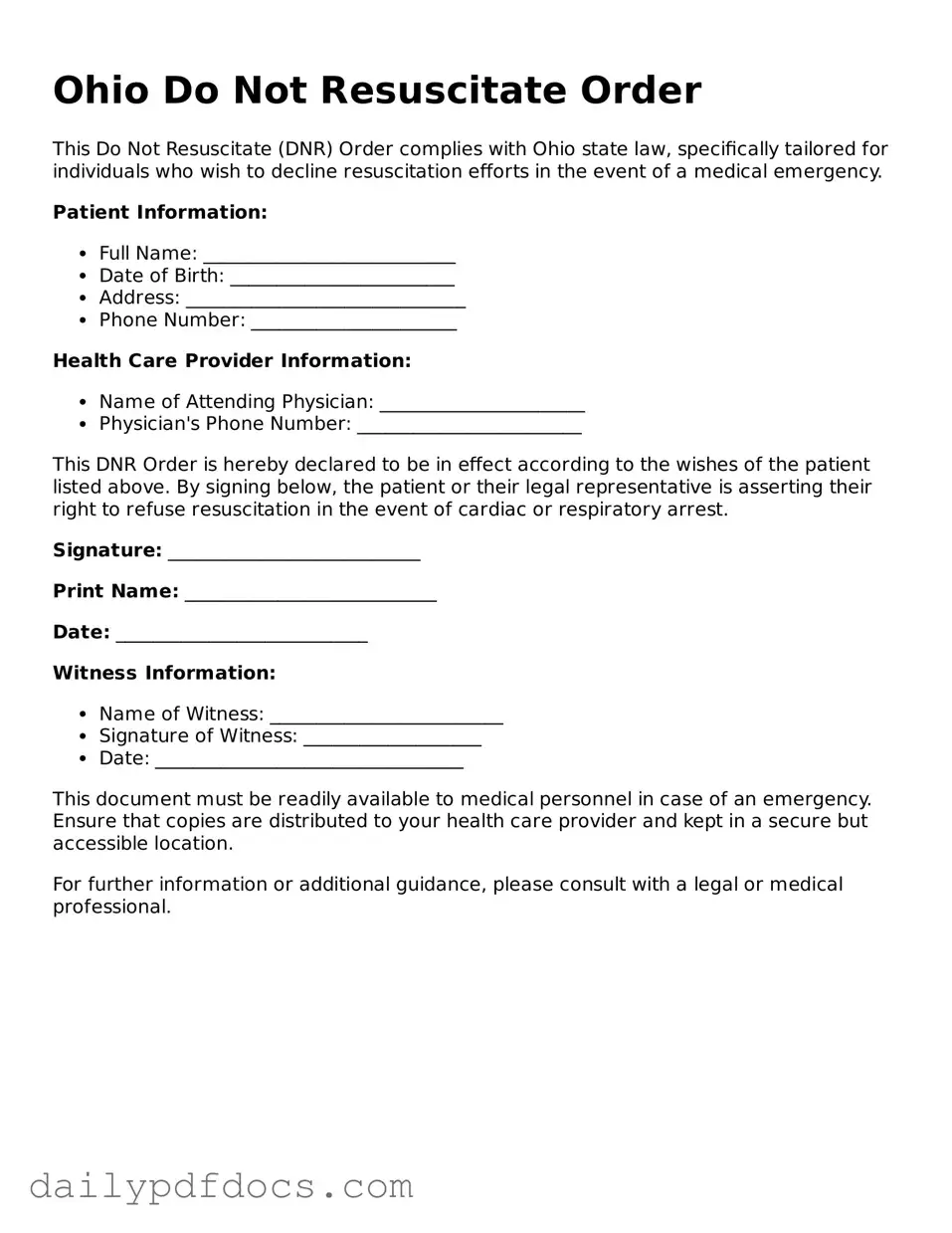What is a Do Not Resuscitate (DNR) Order in Ohio?
A Do Not Resuscitate Order is a legal document that allows a person to refuse resuscitation efforts in the event of a medical emergency. In Ohio, this order specifically instructs medical personnel not to perform CPR or other life-saving measures if the person’s heart stops beating or they stop breathing. It is intended for individuals with serious medical conditions who wish to avoid aggressive medical interventions.
Who can create a DNR Order in Ohio?
In Ohio, a DNR Order can be created by an adult who is capable of making informed medical decisions. This includes individuals who are 18 years or older. If the person is unable to make decisions for themselves, a legally authorized representative, such as a family member or a healthcare proxy, may create the order on their behalf.
How is a DNR Order documented in Ohio?
The DNR Order must be documented on a specific form provided by the Ohio Department of Health. This form must be signed by both the patient (or their representative) and a physician. Once completed, copies of the DNR Order should be kept in easily accessible locations, such as with the patient’s medical records and at home.
Is a DNR Order valid in all healthcare settings in Ohio?
Yes, a properly executed DNR Order is valid in all healthcare settings throughout Ohio. This includes hospitals, nursing homes, and emergency medical services. However, it is crucial that the order is readily available to medical personnel at all times to ensure that the patient’s wishes are honored.
Can a DNR Order be revoked?
Yes, a DNR Order can be revoked at any time by the patient or their authorized representative. To revoke the order, the individual should inform their healthcare provider and destroy any copies of the DNR form. It is important to communicate this change clearly to ensure that medical staff are aware of the updated wishes.
What if someone does not have a DNR Order?
If a person does not have a DNR Order in place, medical personnel are obligated to perform resuscitation efforts if the person experiences a cardiac arrest or respiratory failure. This may include CPR, intubation, or other life-saving measures, depending on the situation and the medical protocols in place.
How does a DNR Order affect other medical treatments?
A DNR Order specifically addresses resuscitation efforts and does not affect other medical treatments. Patients with a DNR Order can still receive comprehensive medical care, including medications, pain management, and other interventions that align with their overall healthcare goals.
Where can I find the Ohio DNR Order form?
The Ohio DNR Order form can be obtained from the Ohio Department of Health’s website or through healthcare providers. It is important to use the official form to ensure that all legal requirements are met. If you have questions about filling out the form, consult with a healthcare professional for guidance.
